I’m feeling a lot like I need to change the format of these reports on my experiences at state parks—at least until I get into the Massachusetts state parks. You may have noticed some major gaps in between episodes. I’ve spent the past three months doing not non-stop but definitely more-than-usual travel, and it’s been great, but I’m looking back at photos and some sparse notes from how I did things back in February, when I started recording. I want to get to where I’m posting more often, but there are a couple of things that I’m running into besides a general lack of time to write, record, and edit the episodes.
When it came to the first few Rhode Island state parks, there was more information available, and what I’m finding about Rhode Island is that, while I’ve said this as a joke before, it is very much a “Special Interest Research Topic.” Blackstone River Bikeway fortunately had a lot about it as a consequence of how the Blackstone River has been used in the context of American industrialism, but for a place like this week’s location—which I went to back in January, by the way, which is a different problem—Snake Den State Park, there just isn’t a lot of information available on the state website for it, and even when I utilize university library databases, I still come up short. I already knew that was going to be the case, since in my teaching life, I’ve had students attempting to do academic research on Rhode Island state parks before and come up blank, but I think I was feeling really hopeful that the state might be able to provide more information on things besides the rich landowners who have owned property that came into state possession. With this in mind, what I talk about is going to need to take significant shifts so that this is more observational and based on the field notes that I collect and gather, and that might even look like, maybe, recording while I’m out there, something I feel a little uncomfortable with. So that lack of available information that has already been cobbled together for me by actual historians is leaving me a little unable to continue with the podcast format that I’ve used.
Some other things that I’ve run into: I haven’t been able to get myself to a state park since February. There are still a few parks from January that I haven’t touched on yet, so I’m behind the initial ambition of what I wanted to do with this project—or at least the initial timescale. As someone making a thing, this is disappointing. Anyone who has tried to self-manage a large project and found themselves pulled in a bunch of different directions at the same time probably knows that feeling. As a writer, I don’t want to be producing garbage. There is probably a way to make these episodes happen faster, and while I feel somewhat confident (or at least as confident as I need to be) when it comes to adding in the background music for these episodes and splicing them together, I cannot always get myself to write faster. Making time to make art can be the hardest part of being any kind of artist because there are always a million excuses not to do it. I had two other projects I was working on, and some of that will probably appear as paid episodes, but because I had to present those projects on someone else’s timeline, they were what got prioritized. This year has been difficult and it has felt like winter has lasted forever. But it’s springtime now, and soon it will be summer, and that does make a huge difference. So, without further ado, here’s some reflections from my visit to Snake Den State Park in Johnston, Rhode Island.
Snake Den
It’s astounding to me that I managed to make myself go outside when it was as cold as it was this past winter. My fingers froze around the camera a few times, and the Instax Mini stopped working at half of the sites I went to because the cold made the battery unable to function. Even the Canon stopped wanting to respond. But I kept going out, and, miraculously, between the rainy weather the Saturday I went to Blackstone River Bikeway and the end of my Sunday morning double yoga classes, it got just warm enough that by the time I arrived at Snake Den State Park, I might have called it perfect hiking weather. No bugs. No humidity. Just enough warmth that you could start shedding layers after you got going. There were a few guest appearances from the sun, though it was mostly overcast when I was there. I think a little about the relief in winter when there are days that aren’t unbearably cold: these are days that, in the middle of spring, would be heartbreaking, and days that, in the fall, remind you that winter is coming around to ruin everything. But in January? February? Anything within 10 degrees of 50 feels like a blessing. A kind of “Thank God” energy reverberated through me.
Driving up to Snake Den takes a person along a lot of different backroad feeling paths, and the parking at the trailhead I went through was at a farm. That parking location isn’t the only, but it was where Google led me to, and it gave me pretty easy access to the trailhead I wanted to get into. Snake Den was formerly owned by the Dame and Steere families of Johnston, and it feels worth noting that there are a significant number of places in Rhode Island that still feel predominantly rural in their shape. Even in towns where the majority of former farms are no longer in operation, the land is still laid out in such a way that it’s easy to picture 200 years ago prior to when they were, and, for what it’s worth, there are still farms that are in business. The State Parks website attempts to link Snake Den to the lands once owned by famous Rhode Islander Moses Brown, though I struggled—as I’ve mentioned, likely due to Rhode Island being a place that not many people have written and published much about, or at least not as extensively as other states—to find full verification. Even the phrasing on the website though, which reads, “It is thought that several of the farms including the Steere and Waterman farms were once owned by Moses Brown of Providence.” There’s a lot of information about Rhode Island’s famous rich families, so it seems strange that this one detail, the ownership of the farms around Snake Den, should be stated less confidently, especially since there’s a quote from Brown later in the page that reads, “Brown complained to Slater that his demand for more and more investment money was ‘spinning all my farms into cloth!’” but without going directly to the state archives and knowing precisely what I’m looking for, I can’t say one way or the other if it was or was not part of Brown’s property. It was named for a fissure in rock that had once been quarried for building material, and buildings made from that rock are still standing in Providence today.
When I started working on this project, I wondered a lot about what our expectations are for state parks and outdoor recreation; people arguably have their own opinions on what outdoor recreation should or should not look like, and one of the perceptions that I think people might have about Rhode Island is that, besides the beaches, it doesn’t fit into a stereotypical vision of what it means to be in nature. It has been important to me to visit a bunch of different parks here so that I can expand a definition of what being “in nature” really means, and also to maybe draw attention to the different ways in which we can engage with and be a part of the community and world in which we live. Osamequin Nature Preserve came probably closest to a conventional interpretation of nature, but its only downside is that it’s small.
Snake Den was the first time I felt the sense of what I have felt when recreating in some of the Massachusetts state parks, which I think is that it feels, at least a little, more expansive and like there’s a more genuine effort that I had to make when moving my body. It was also the first time that I didn’t see quite as much evidence of people by way of litter left on the trails or in any of the small streams, and I think that might speak a little bit to different trends in outdoor recreation. It might be that when the places are more obviously natural, and that they are a little bit more inaccessible because of trail difficulty or something like that, the people who go there, barring some extreme exceptions like highest altitude mountaineering, are going because they genuinely love the outdoors. If there’s no litter in a Rhode Island state park in particular, that speaks less to the management of the space by RIDEM and much more to the self-management of the people who are there. These might also be perceptual biases about the kinds of people who hike versus the kinds of people who prefer to lay around in a space, and it might also be a bias on my part to assume that the people who choose these more challenging hikes are necessarily more concerned with the environment itself at all. Those are biases that I’ll own up to.
Some notes about Snake Den: it is one of the larger parks that I’ve been to so far for this project. There are a few different trailheads and trails that intersect with one another, but they have pretty obvious blazes, which I think is helpful. This park does have a map online, which is not something that can be said for all of the other state parks I’ve visited so far, but the trail map that’s actually at the park is a lot more useful and has better color-coding than what you’ll find on the state park website. It’s probably best to use something like the AllTrails app. If you want a print out, you’ll have to either settle for the uncoded one on the state park website or print a picture from Google, which might not be the best quality, but at least will ensure that you’re able to know which one of the trails you’re on and when you’re going to be intersecting with a different loop. I didn’t hike in sneakers and I don’t think I’d recommend doing so; the grounds can be muddy enough alone to justify having a more waterproof shoe, but it’s better to just stick to a pair of boots anyway. There aren’t any venomous snakes here; there haven’t been any venomous snakes in Rhode Island for some time.
Thinking about that—the loss of certain animal species—makes me feel kind of sad. New England is maybe great in some ways because it’s so safe for people, or at least, safe from most of the animals that are a problem in other parts of the country, and I think that for folks who have no interest in meeting any kind of wild animal while outdoors, this is a good thing. There are still plenty of birds, squirrels, and chipmunks and similar. But. It feels bad knowing that for us to be comfortable here, we had to eradicate different species. We didn’t have to do that, and we didn’t have to drive anything to geographical extinction, and yet we did it anyway because we didn’t like them: we didn’t like the snakes, we didn’t like the bugs, we didn’t like the wolves, we didn’t like the bears. Now, bears are making a comeback in some parts of southern New England, and people are really worried about it, and maybe they should be: in getting rid of the predator species, we’ve also made it somewhat harder for them to have the food that they’re looking for, which means they’re going to be getting into our trash or getting acclimated to our food, and that’s not good for anyone. Recently, I was in New Orleans for a conference, and while I was sitting outside eating beignets, a sparrow sat down on the table. Oh, cute, right? Other people were used to feeding these birds, and so this particular sparrow assumed that I’d be giving up some of my food to her, too, and started to go for the dough. I had no interest in sharing; I don’t think it’s good to feed wild animals, for one thing, and for another, birds carry disease, so I really don’t want them near food that I am going to be eating. This isn’t to say that I hate birds or anything, just that they’re able to get their own food and shouldn’t be bothering me for mine. When I didn’t let the bird eat my food, it pecked my finger. A bird doing this is not as big a deal, but something larger—a fox, a coyote, a bear—would be a much larger issue. Our relationship with animals is complicated and difficult, but I think reveals something about us. We find it hard to relate to the ones that are more creepy-crawly, but we love the ones that look like the ones we have at home. We don’t often think about the ways our actions impact the other creatures in the world. We look at the ones that cause us immediate problems or the ones that we’re afraid of, or who threaten our livestock, and we kill them despite the fact that animals don’t need to justify why they exist in the world, just like we don’t have to. Roadkill represents to me the greatest failing that we have as a species to consider what we do to the world around us. Could we be better in harmony with the other living things here? We don’t want to be alone in the world so badly that we send out signals to space, but we also find it challenging to think of intelligences other than our own here on earth. How are we so sure that we’ll be able to do that much better if there is alien life out there? How are we so sure that they won’t treat us as something to be eradicated just like we’ve eradicated rattlesnakes in so much of New England? I’m being a little downer here. I didn’t have a bad time at Snake Den.
It had been so long since it had been warm that I didn’t know exactly what to do with myself, and while I layered, I don’t think that I layered very well, and I found that the bag that I’ve been using just isn’t cutting it for what my purpose is. I liked the extra pockets on the army field coat I had, and which I’ve had since high school, but I needed to figure out a better way to store it when it became too warm. A lot of these trips have been processes of learning about how I approach being outside, and the ways that I need to rethink what I have with me and how I carry it when I’m out. When I was younger, I was a Girl Scout, and I still ostensibly have some knowledge from that, and it isn’t as though I was ever a stranger to hiking before this project, but I think that my experiences have usually included having other people around. My methods of carrying are imperfect. My methods of layering are imperfect. It’s fine. I don’t bite off more than I can chew, and it isn’t as though going to state parks in Rhode Island is anywhere near as strenuous as going to state parks in, for instance, New Hampshire, or Vermont, or Maine.
What are we looking for when we go outside? What did Snake Den teach me? If I’m going to be honest, this has been a little bit of the struggle with this episode and why it’s taken so long to actually put out there, besides my own frustrations with some of the technology (such as my camera, which I need to replace). At the Blackstone River, the point is pretty obvious that if we’re going to be engaging in nature, then we probably should stop destroying it so much, and that if we’re going to name places as being historically, culturally, naturally significant, then we actually need to put some effort into the stewardship of these places. At Colt State Park, which was also a difficult episode for me to complete, I was frustrated that the majority of the easily accessible history of the place had more to do with the guy who once owned it than anything about how the park operates or about the other people who have lived there, or even about the natural history of these parks, something that’s frankly absent from a lot of state parks. At Osamequin, I was able to think about inequitable access to outdoor recreation because of the town where I was, and at Goddard, like at Blackstone River, I thought about conservation and ecological protection. Rocky Point remains the most Rhode Island of all of the parks, and I think is the most culturally-defining place in the entire state besides, maybe Scarborough State Beach. But here in Snake Den, I’m stuck. I don’t want to keep hammering in the same points over and over again. Yet.
Places like Snake Den represent a different level of interaction and exchange between people and ecology; that is, Snake Den is a place that does a pretty good job of managing itself because of the farms nearby and because of how people visit. Hunters could do a better job of cleaning up their shotgun casings, but the prohibitive nature of the trails, the parking, and the lack of places to spread out and picnic communicates certain things about the way this place asks to be used. I don’t think that this is something that is good or bad, just that it is. This feels like a contradictory statement, given that I’ve been arguing that everyone should have access to outdoor recreation, but maybe that’s because of that word “prohibitive,” and I think I should clarify a little to explain what I mean by that. I’m fairly fit, and I do pretty well with most outdoor recreation—but there are still trails that I have no business being on because I lack certain technical ability. There are also trails that are prohibitive to me because they might involve things that I don’t want to do, such as being up on high, narrow ledges, or over terrain that I don’t enjoy, and so, I avoid those spaces even though they might be beautiful because they’re just not something I want to deal with. For casual outdoor recreation, places like Snake Den are probably not exactly the right place to be because there is some moderately challenging terrain, because it is a space that people unfamiliar with could potentially get lost in, and because it isn’t a place to lay down and relax inside the woods. (I think though there might be some picnic benches at one of the other trailheads.) When the place is not necessarily inviting for rest, I wonder if that has an impact on how the human imprint will look when there. There is still obviously a human presence between the farms surrounding the land and the trails themselves, but it isn’t so much a place that people stay at compared to, for instance, Rocky Point or even the far end of the Blackstone River Bikeway.
I don’t think it’s nature’s job to be necessarily inviting for us any more so than it is for any other creature. I’m thinking about the snakes again. The last rattlesnakes in Rhode Island were over in Tiverton, which you have to go through Massachusetts to get to. There are still some rattlesnakes in Massachusetts-—my brother once saw one on a job site—-but they’re rare. It’s very human to believe that we’re at the center of the universe and that the world should bend to us, but I think it’s also very human to understand that this doesn’t have to be the case; I think that tension lies at the root of a lot of Romantic literature, at least, and probably a lot of Westerns, too. In exchange for being there, I think that we have certain responsibilities: picking up after ourselves is the bare minimum. The world is full of contradictions; we don’t survive if we don’t make space for ourselves, but at the same time, we need to be able to share that space because we’re not the only ones here. There needs to be room for both us and the other living creatures around us. There has to be room for us and for what we have determined to be outside of ourselves as nature, and I think our largest flaw is how we think about infinite growth and our inability to stop. Being responsible for where we are means recognizing the limits to what a space can give in any timeframe, and honoring that. The unlimited or infinite growth model of capitalism or economics negates real-world limits. In the same way that our bodies cannot provide infinitely, neither can nature, though nature will always be in a process of growth, and change. It just might not look the way that we want it to, and it might not be able to support us.
As I write this, New England has been in a drought for almost a year. The rainfall that we have right now has not made up for the lack of rain for the past year. I’m choosing to focus on New England because that’s where I am, but I think that there are certain amounts of consistency in stories across the world when it comes to our environment. At the same time that we have been in a drought, we face the risk of what is likely to happen to our communities as sea levels continue rising, and what is likely to happen with increasing storm severity. Just because something hasn’t happened recently doesn’t mean that it hasn’t happened before. I think a little bit about the reasons why people move, and at the end of the day, regardless of the cause, it’s because where they live just isn’t suited to them anymore. We’re such a versatile species, and it’s beautiful that we’re able to adapt to most of the places where we go, but to what degree is it us that should be adapting to the land or the land that we should be adapting to us? I feel like that it should probably be us to the land. When we think of it the other way, everyone will probably lose something in the end. Unsustainability.
When I finished my walk through Snake Den, I was tired. I got back into my car and watched someone riding their horse in one of the fields next to the trailhead while I settled in. Other people were starting to walk on the trail, but fat raindrops started hitting my windshield, and I figured that I was back in my car just in time. I think in some ways I made a mistake by deciding to start my state parks project during January, since there are so many places that I’ve been to now that I would have preferred to see in full bloom, like now, in May, but the relative quiet of winter walks in the woods allowed for a reflectivity that I don’t always get, and sometimes inclement weather is sometimes what I need in order to be afforded the privacy that I want with where I am. It’s a different kind of prohibitive condition. There were a few phone calls waiting for me that I had to answer, and my stomach rumbled, reminding me that I needed to refuel. Not long after Snake Den, I’d end up having to take a short hiatus from visiting the parks, largely due to the travel that I did during February, March, and April. The temperatures would drop again, and the following park visit I’d make, to Lincoln Woods—which will be the focus of the next episode of this series—was blanketed in snow and felt near-arctic when I went the next weekend. For now, though, I felt like I got lucky, and thought about how I might be able to make time to get back to Snake Den again in better weather.
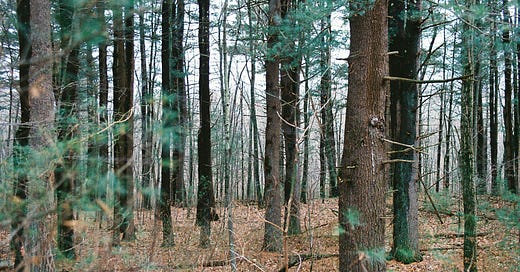



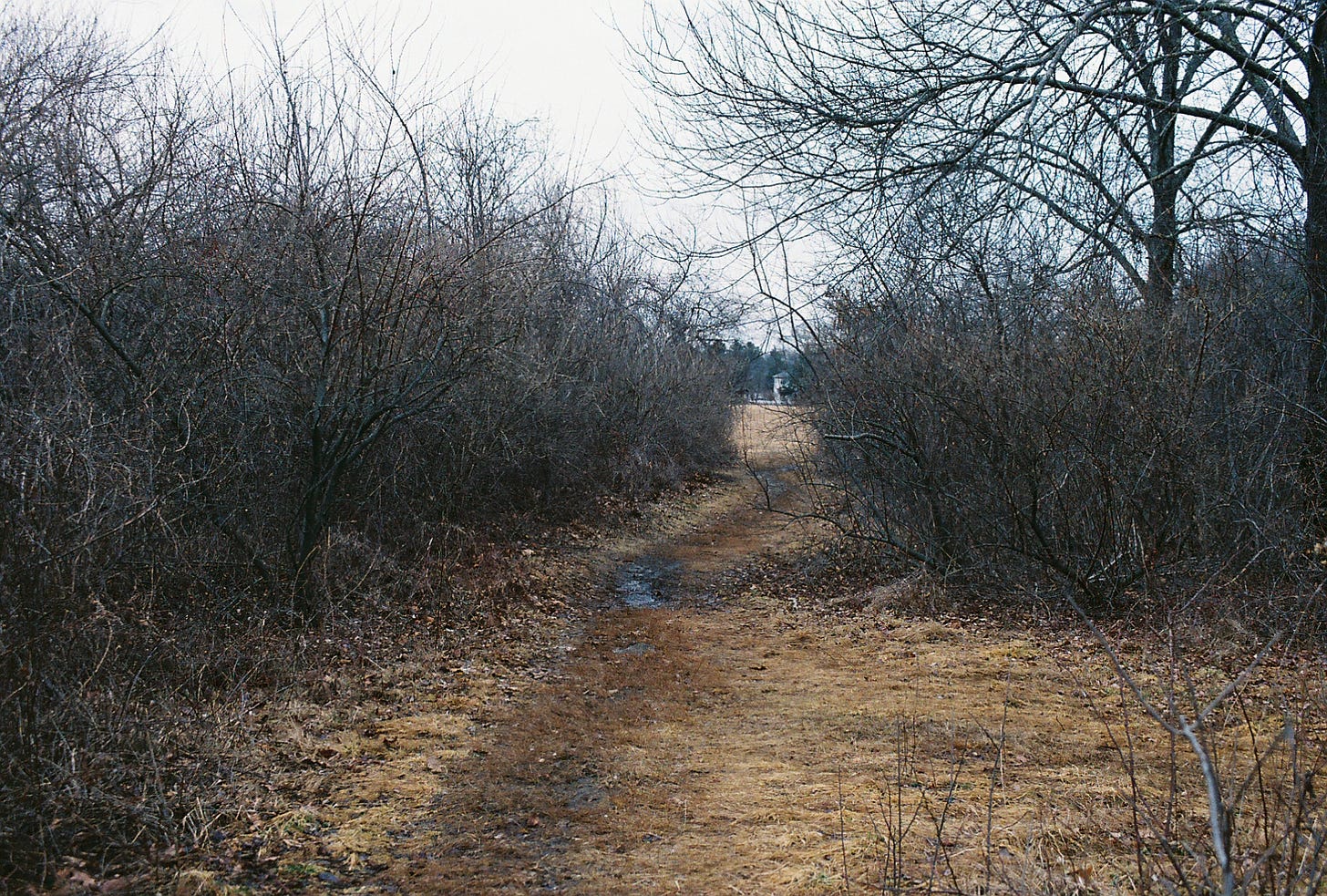

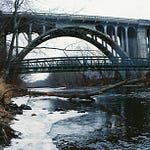
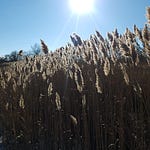
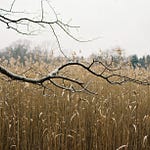
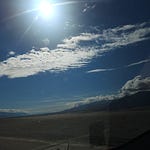



Share this post